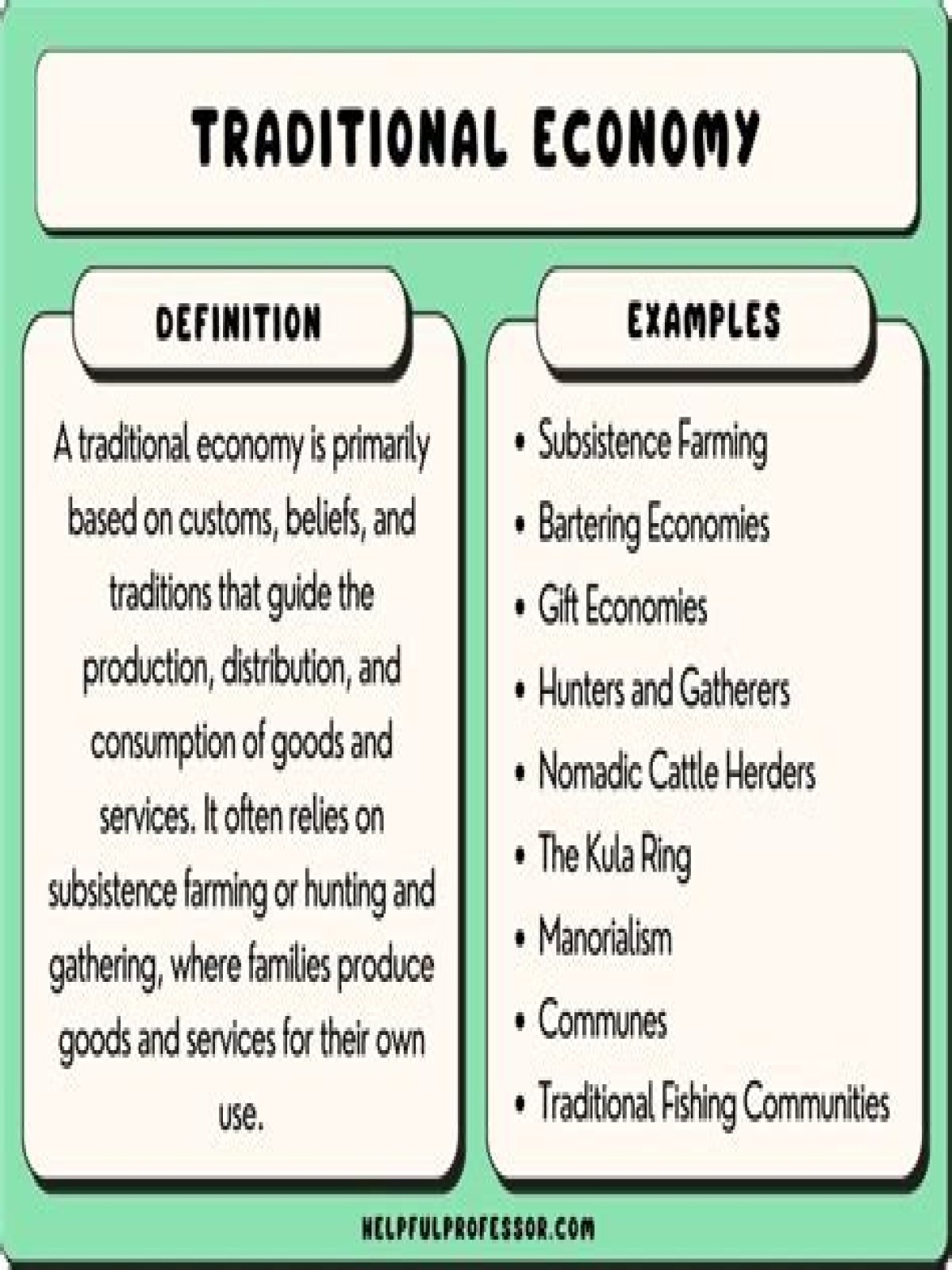This economy relies on tradition and culture to choose what goods and services will be produced, how those goods and services will be produced, and how those goods and services will be distributed throughout the populace.
What are the key economic activities of a traditional economy?
The sectors of economic activity include agriculture, hunting, fishing and gathering; primitive barter trade is used instead of money; there is no sustainable excess (surplus) product; the social organization in a traditional economy is represented by local family-tribal communities; while mobility is determined by …
What role does the government play in a traditional economy?
In a Command Economy or Planned Economy, the central or state government regulate various factors of production. In fact, the government is the final authority to take decisions regarding production, utilization of the finished industrial products and the allocation of the revenues earned from their distribution.
What are the 3 main goals in a traditional economic system?
Goals- Stability, freedom, security, equity, growth, efficiency. 2. 3 Economic Questions1) What will be produced with our resources? 2) How will these goods be produced?
What are features of a traditional economy?
A traditional economy is a system that relies on customs, history, and time-honored beliefs. Tradition guides economic decisions such as production and distribution. Traditional economies depend on agriculture, fishing, hunting, gathering, or some combination of the above. They use barter instead of money.
What type of government is traditional economy?
Countries that use this type of economic system are often rural and farm-based. Also known as a subsistence economy, a traditional economy is defined by bartering and trading. A little surplus is produced and if any excess goods are made, they are typically given to a ruling authority or landowner.
What are the pros and cons of traditional economy?
List of Pros of a Traditional Economy
- It is simplistic.
- It is less destructive.
- It promotes a strong sense of community.
- It meets vital needs.
- It is at risk of being overpowered by larger economies.
- It does not allow change.
- It only offers a little amount of choices.
- It lays down a lower standard of living.
What are advantages of traditional economy?
The main advantage of a traditional economy is that the answers to WHAT, HOW, and FOR WHOM to produce are determined by customs and tradition. The main disadvantage of a traditional economy is that it tends to discourage new ideas and new ways of doing things.
What are the five characteristics of a traditional economy?
Characteristics of a Traditional Economy
- Traditional economies are often based on one or a few of agriculture, hunting, fishing, and gathering.
- Barter and trade is often used in place of money.
- There is rarely a surplus produced.
- Often, people in a traditional economy live in families or tribes.
What are the characteristics of an economic activity?
Characteristics of Economic Activities. 1 1] Income Generation. All economic activities will generate some form of income. It is not compulsory that such income is in monetary terms, it can be 2 2] Productive in Nature. 3 3] Consumption is also an Economic Activity. 4 4] Savings, Investment, Wealth.
What do you need to know about the purpose economy?
To understand the Purpose Economy, it is critical to understand purpose and how it is created for people. The definition and nature of purpose is often misunderstood.
Which is the correct answer to the question what are economic activities?
Q: _____ is the economic activity that comprises the whole spectrum of economic activities from production to distribution to trading of goods and services Ans: The correct answer is C. Business is the sum total of all economic activities related to the production and selling of goods and services.
Who are the pioneers of the purpose economy?
A generation of Purpose Economy pioneers, like Whole Foods Market’s John Mackey and Virgin’s Richard Branson, are challenging others to follow their lead and to create new frameworks both to do well and to do good, which raises the bar for the business community and turns successful theories into movements.
